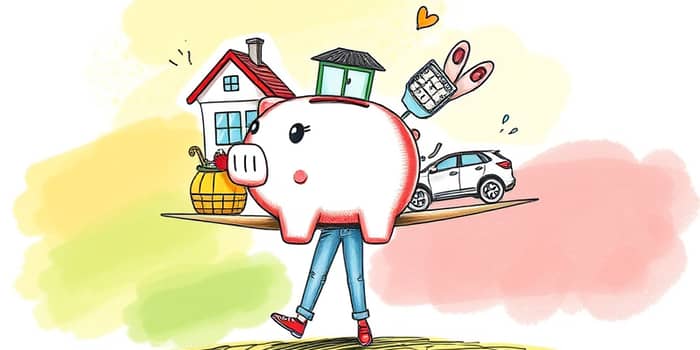
In today’s world, balancing your budget while preserving happiness can feel like walking a tightrope. Yet, with the right mindset and tools, you can transform financial stress into empowerment. This guide unpacks the real-world numbers behind monthly expenses and offers practical tips for thriving without compromise.
From housing and utilities to groceries and leisure, each dollar you spend is a step toward your goals. By mastering monthly expenses without compromise, you ensure that life remains fulfilling and purposeful.
The term “cost of living” refers to the total amount of money needed to cover essential expenses—housing, food, transportation, and more. Across the US, this average ranges from $2,500 to $3,500 per month, depending on location, lifestyle, and household size.
On an annual basis, the average household spends roughly $61,334 per year. Recognizing these figures is the first step toward informed decision-making, allowing you to tailor your budget to your unique circumstances.
Breaking down your expenditures into clear categories helps pinpoint areas for optimization. The primary components typically include:
Consider the following detailed breakdown:
By monitoring these categories each month, you build awareness and accountability.
Geography plays a significant role in your budget. Coastal hubs like New York and San Francisco push monthly costs toward the upper end of the spectrum, with rents exceeding $2,900 for a three-bedroom near the city center.
Conversely, states such as Mississippi offer a more attainable cost of living—housing index at 66 and average two-bedroom rent at roughly $991 per month. Understanding these differences can inform decisions about relocation, remote work, or yearly travel plans.
A well-structured budget turns wishful thinking into actionable planning. The the 50/30/20 Budget Rule approach remains a foundational framework:
Beyond percentages, consider implementing these techniques:
The cash envelope system allocates physical money to categories, reducing impulse purchases.
Digital tools like YNAB (You Need a Budget) and PocketGuard provide automated tracking, real-time alerts, and goal setting. Regularly reviewing your spending trends helps curb “lifestyle inflation,” ensuring that rising income doesn’t automatically translate into higher costs.
Cutting expenses doesn’t mean sacrificing happiness. With creativity, you can enjoy life fully while keeping costs in check. Try these ideas:
By focusing on value—rather than price—you can indulge in memorable experiences and preserve funds for long-term goals.
An emergency fund starter goal of $500–$1,000 can shield you from unexpected setbacks. Once established, shift toward building a three- to six-month cushion for essential expenses.
Long-term financial health also hinges on planning for retirement, education, and significant purchases like homes or vehicles. Automate transfers into savings or retirement accounts to make progress effortless and consistent.
Consider Emma, a graphic designer in Austin who slashed her monthly food budget by $200 through meal planning and bulk grocery shopping. Or James, a remote worker who relocated from San Diego to a smaller town, saving over $1,200 each month on rent.
These stories illustrate that even modest adjustments—paired with smart spending—not just extreme saving—can yield substantial results without diminishing quality of life.
Mastering the cost of living is both an art and a science. By grounding your decisions in real numbers, using proven budgeting frameworks, and seeking joy in low-cost alternatives, you can navigate today’s financial challenges with confidence.
Take the first step today: track your spending, set clear goals, and embrace the mindset that money is a tool for living your best life—without compromise.
References













